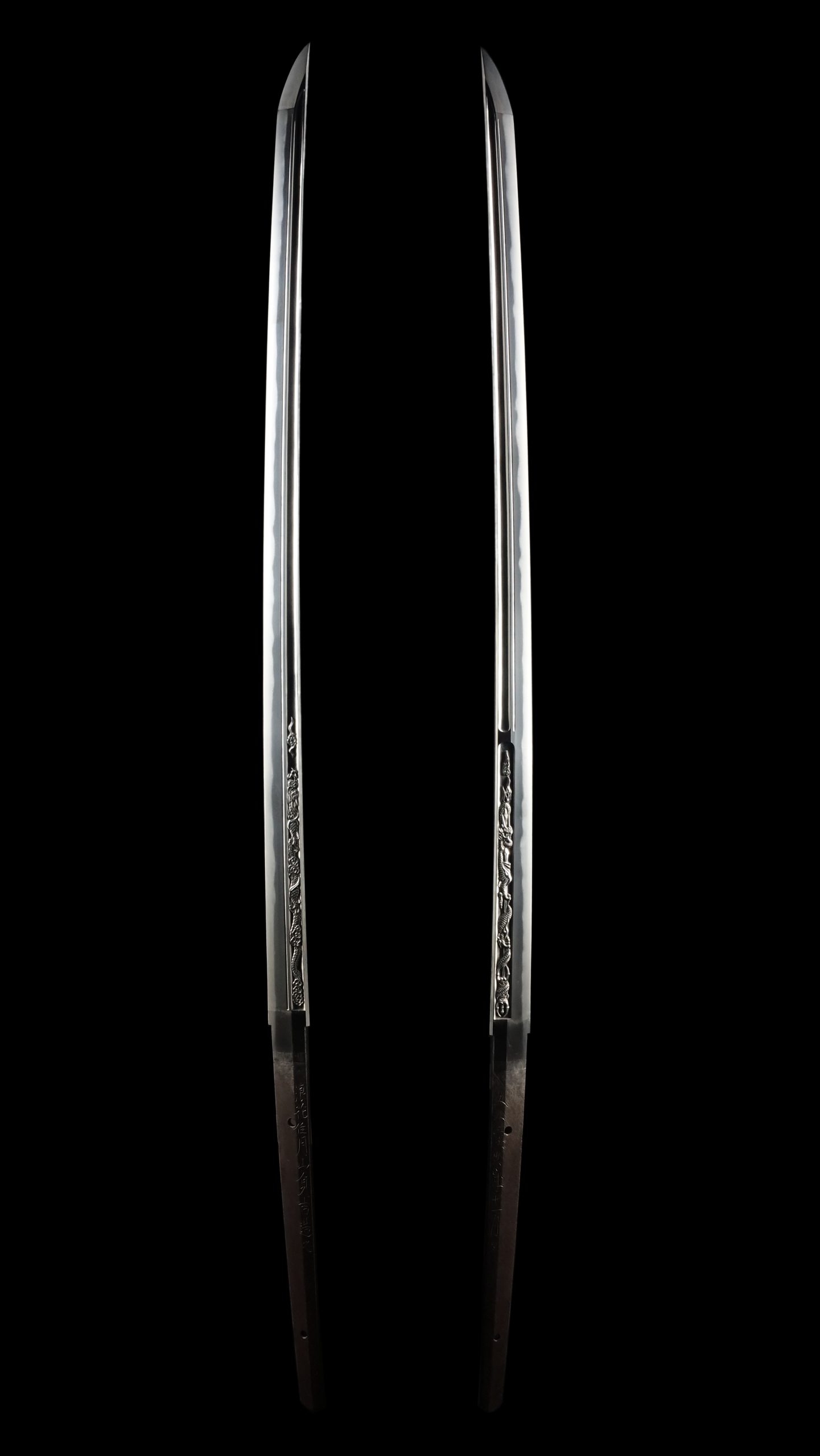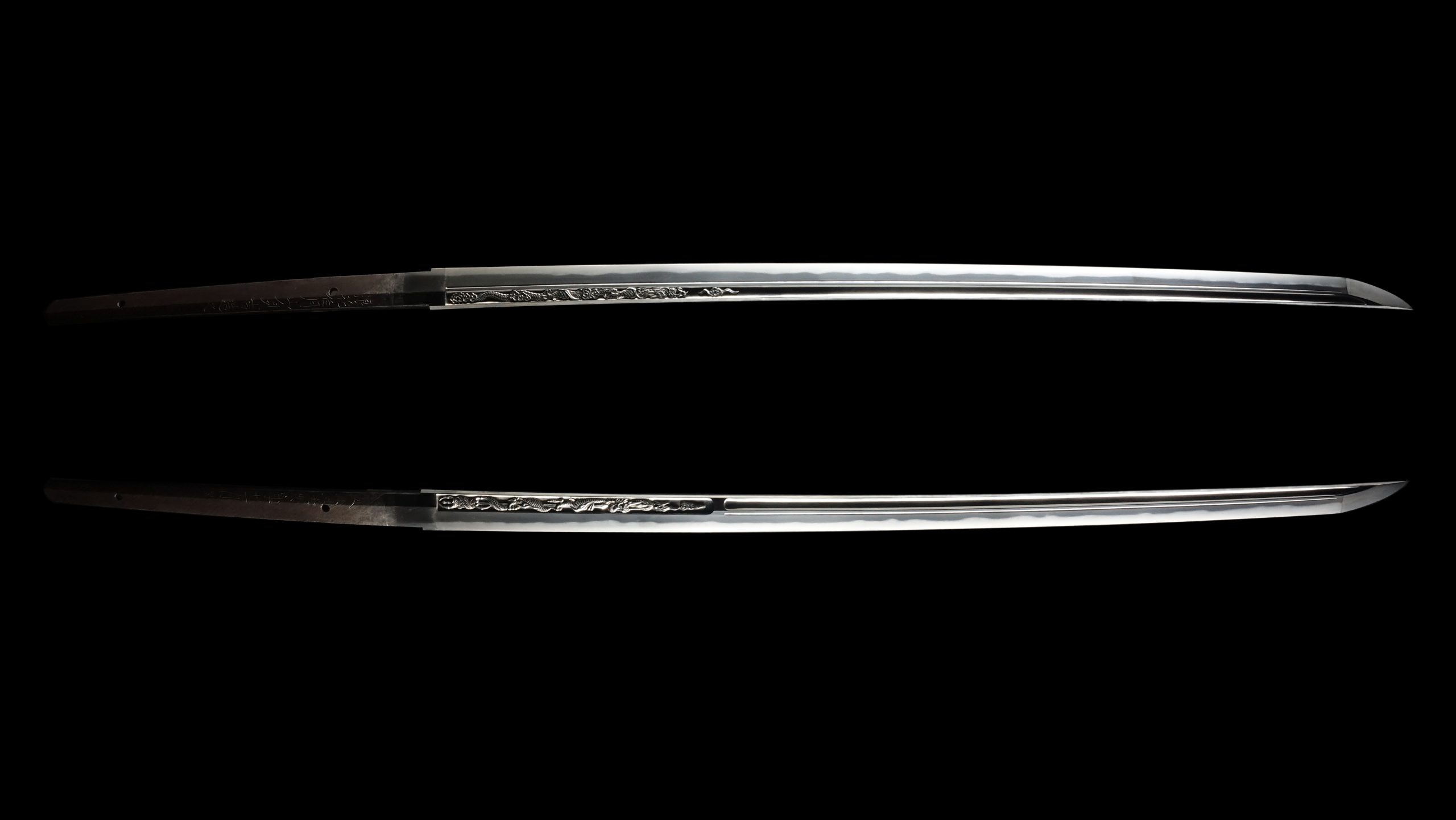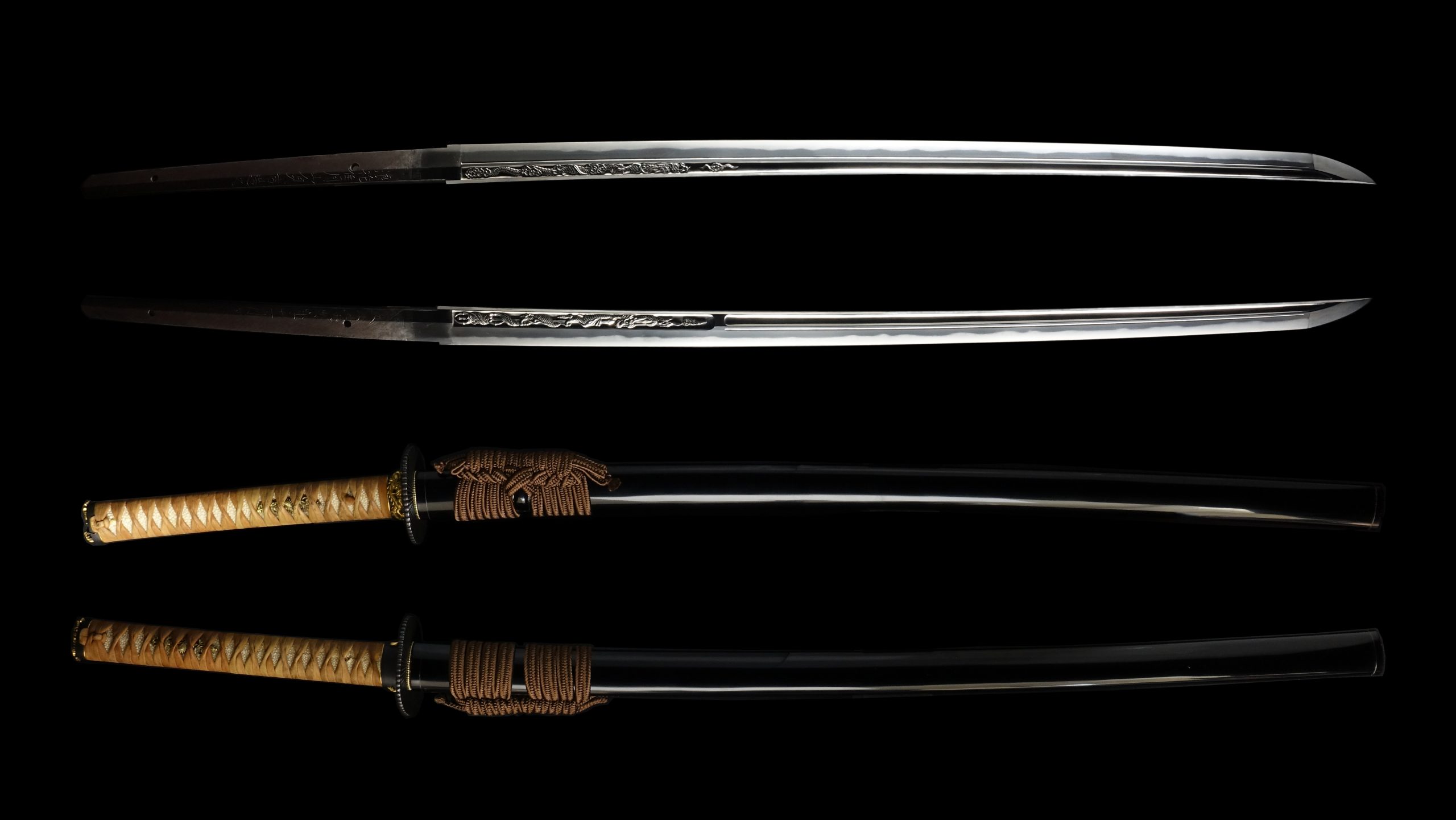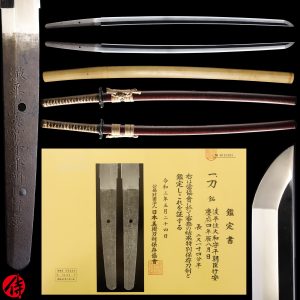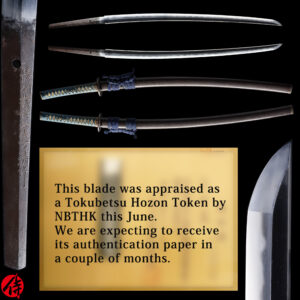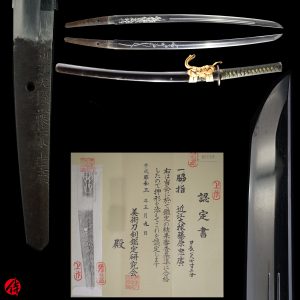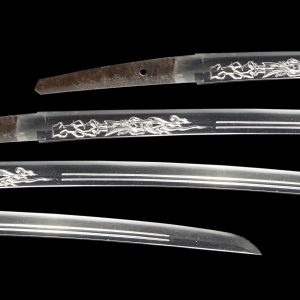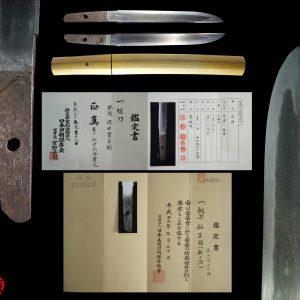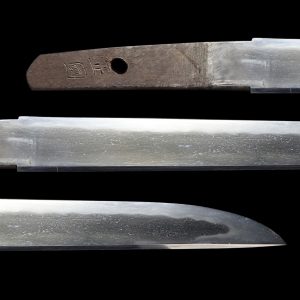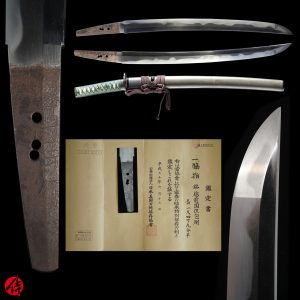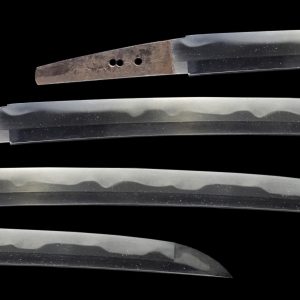Antique Japanese Sword Katana Signed by Gassan Sadayoshi with Tokubetsu Hozon Certificate
【Description】
This blade was signed by Naniwa Jyu Gassan Sadayoshi (浪花住月山貞吉) in November, the third year of the Bunkyu era (1863), based on the signature. Naniwa is where this swordsmith lived when he forged this blade. Naniwa is located in today’s Osaka prefecture, and Jyu means living in Japanese.
Gassan Sadayoshi’s real name is Gassan Yahachiro. He was born in Dewakoku(Yamagata prefecture today) in 1781. Gassan is the name of the school he belonged to. It was initially founded during the Heian period(late 12th century). It is said that the school name “Gassan” (月山) came from the fact that they forged swords near the mountain called Gassan in Dewakoku.
In Sadayoshi’s early career, he learned sword forging technique from his father, Okuyama Yasaburo Sadachika (山弥三郎貞近), who is said to have been a descendant of a member of O-Shu Gassan school (奥州月山), one of the oldest Gassan schools.
When Sadayoshi became about 20 years old, he went to Edo city (today’s Tokyo) to serve Suishinshi Masahide (水心子正秀) as an apprentice. Sushinshi Masahide is known as one of the most skilled and famous swordsmiths at the end of the Edo period (150-200 years ago).
After ten years of apprenticeship under Masahide, Sadayoshi mastered excellent craftsmanship. And he moved to Osaka in 1833 when he was 30 years old. He founded Osaka Gassan school there, improving his sword-forging technique even more and eventually settled there. He also trained many apprentices, who later became notable swordsmiths at the end of the Edo period.
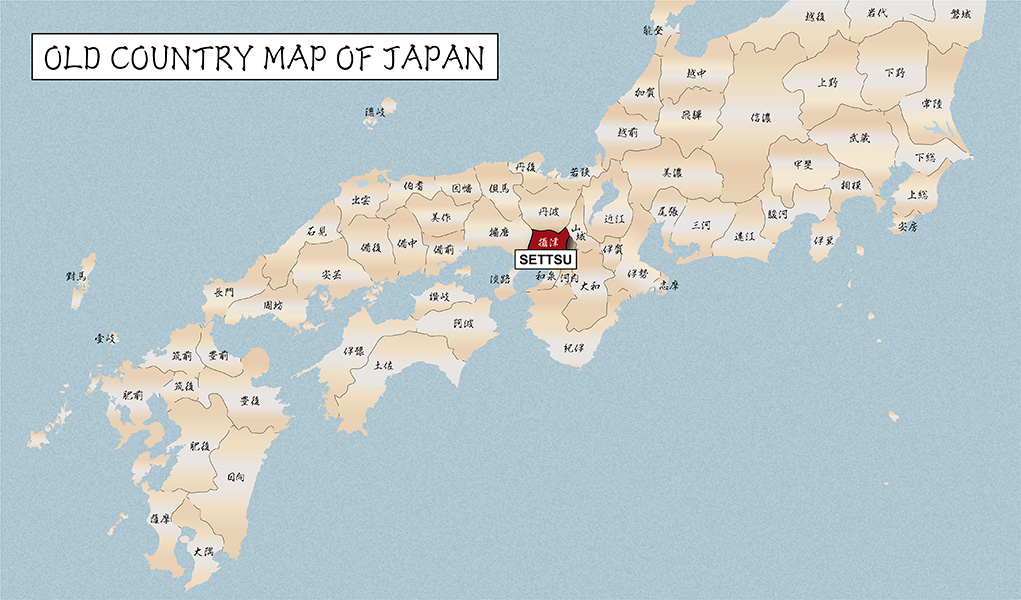
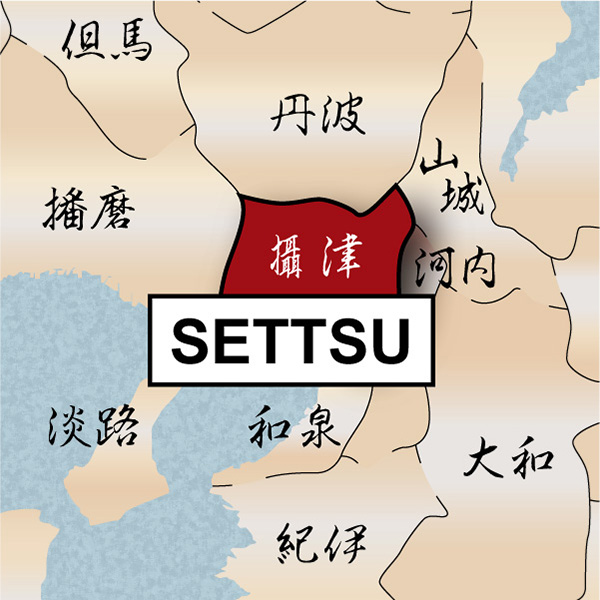
While Gassan school was known as one of the most prestigious schools from the Kamakura period (late 12th century), its presence faded in the early-mid Edo period. However, after Sadayoshi became a highly-regarded swordsmith at the end of the Edo period, the whole school revitalized and flourished again because of his continuous effort.
Sadayoshi adopted a son from Tsukamoto family and named him Sadakazu, who later became one of the most famous swordsmiths in the post Samurai period (Meiji era). Father and son spent many years researching traditional Gassan style swords and finally made Ayasugihada, the signature design of Gassan school. Ayasguhihada looks undulating grain pattern in the Jihada (steel surface), which resembles a Japanese cedar grain. Gassan Sadayoshi also forged other styles of swords aside from Ayasugi Hada Jihada.
Gassan Sadayoshi died at the age of 71 in the third year of the Meiji era (1870). His son, Sadakazu, preserved the tradition of Gassan, and he passed it down to Sadakatsu. The Gassan school has been running for the 6th generation. The current Gassan alive is Gassan Kazutoshi, and his son is Gassan Sadanobu.
They still keep forging traditional Japanese swords in Nara prefecture today.
We are confident you will appreciate this gorgeous long blade with beautiful engraving on the blade. It is accompanied by the aesthetically pleasing sword mounting as well.
This blade is appraised as a Tokubetsu Hozon Token (特別保存刀剣) issued by NBTHK (Nihon Bijutsu Touken Hozon Kyokai:日本美術刀剣保存協会). This authentication paper was only given to authentic Japanese swords, especially well preserved and high quality with artistic value.
【 Blade】
Cutting Edge Length(Nagasa):78.8 cm (31.0 inches)
Curvature(Sori):0.7 cm (0.275 inches)

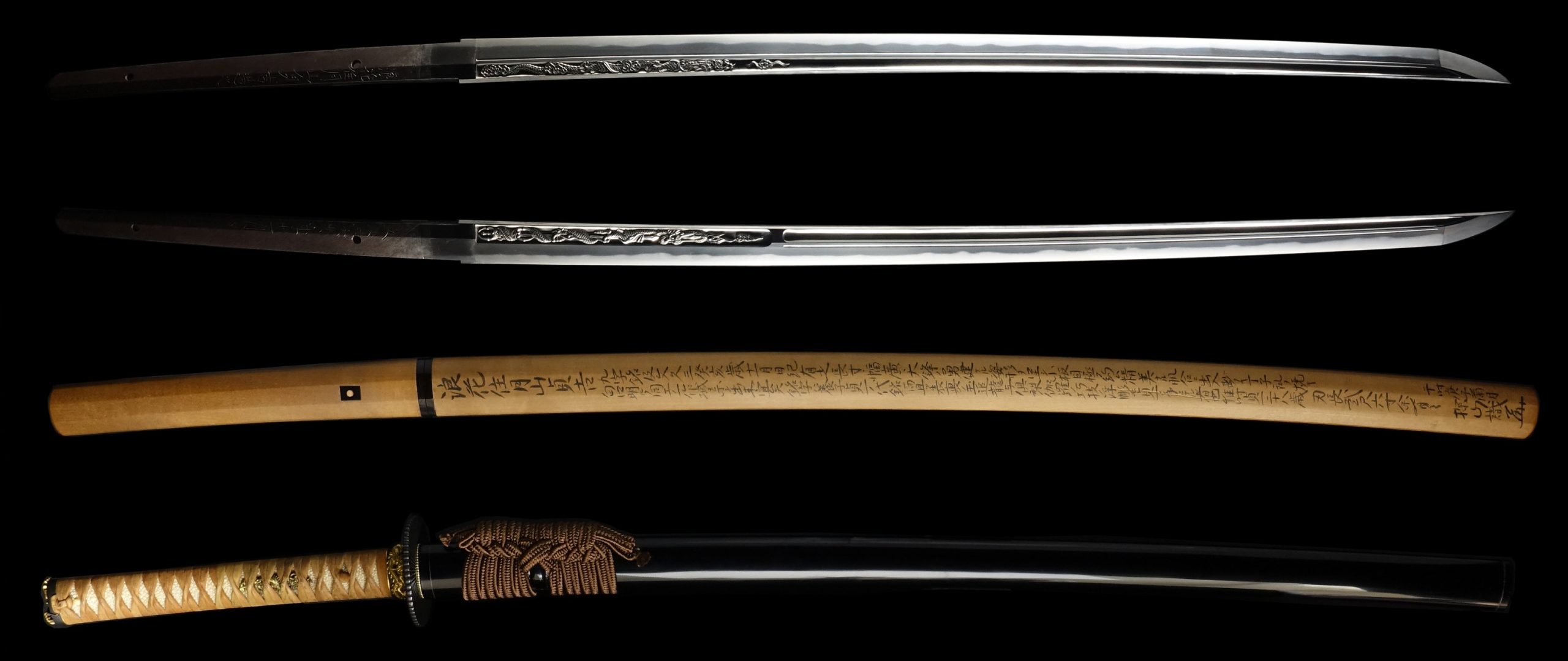
Hamon:
The crystalline structure which forms along the cutting edge of a blade as a result of the hardening process
Jimon(Jihada):
visible steel surface pattern created by folding and hammering during forging process
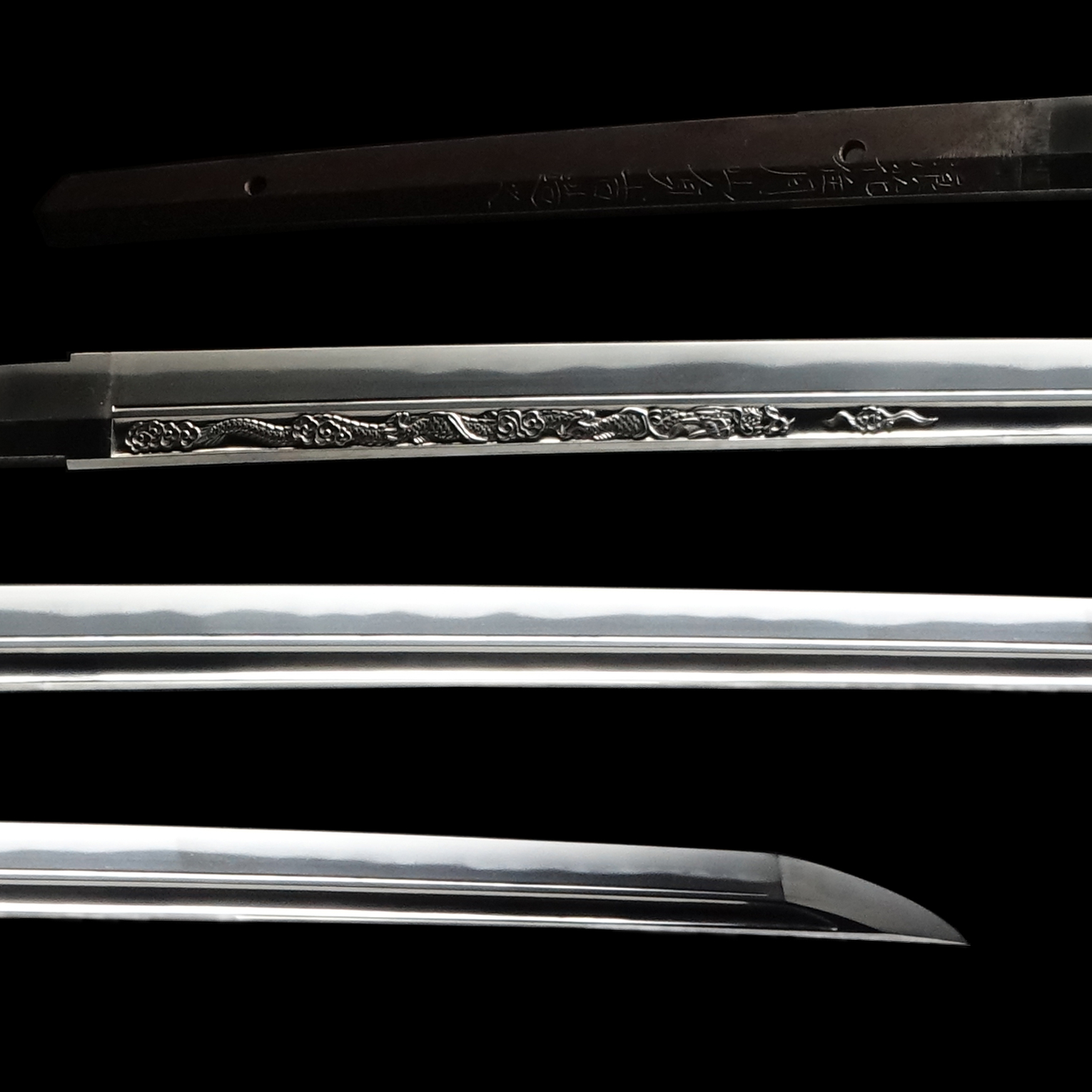
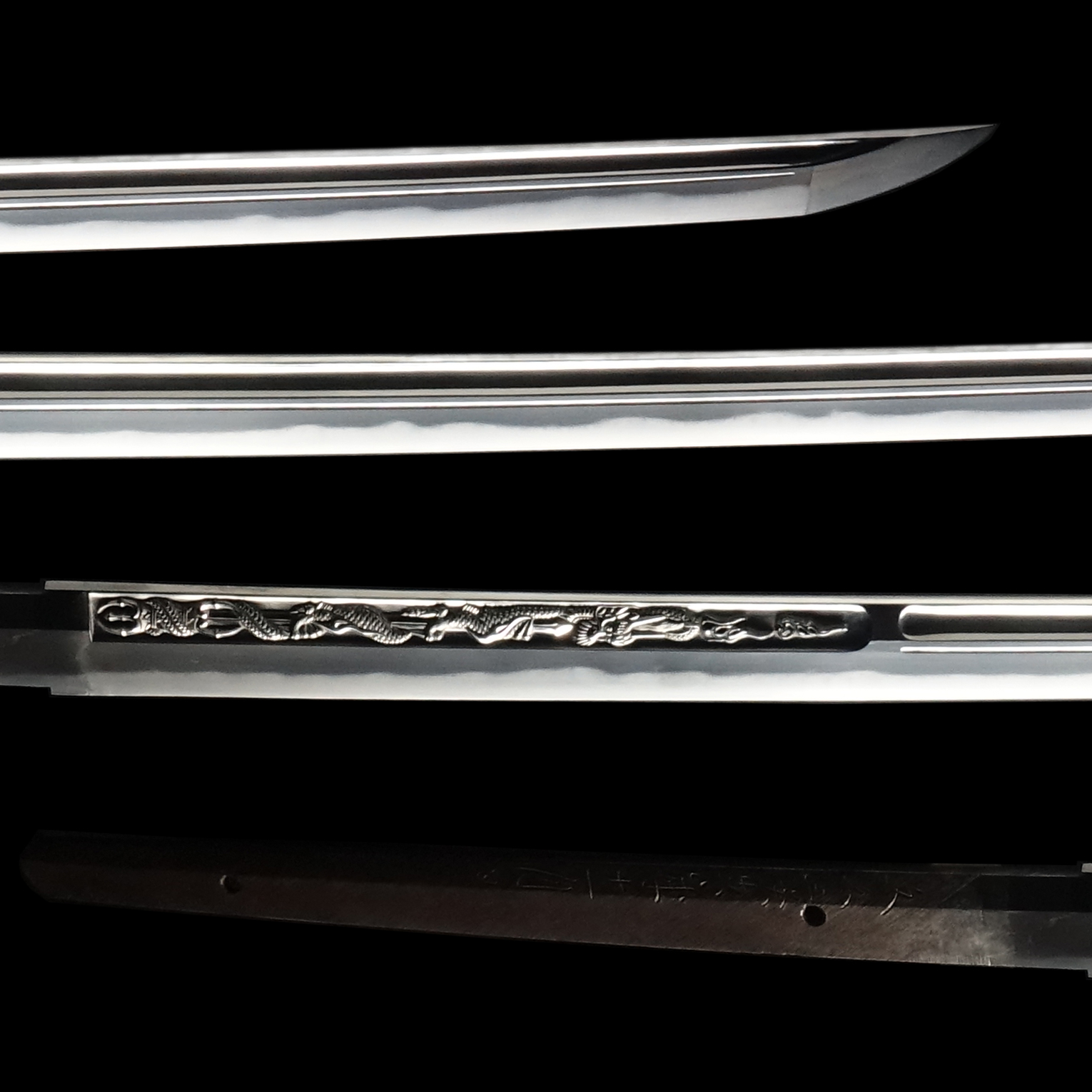
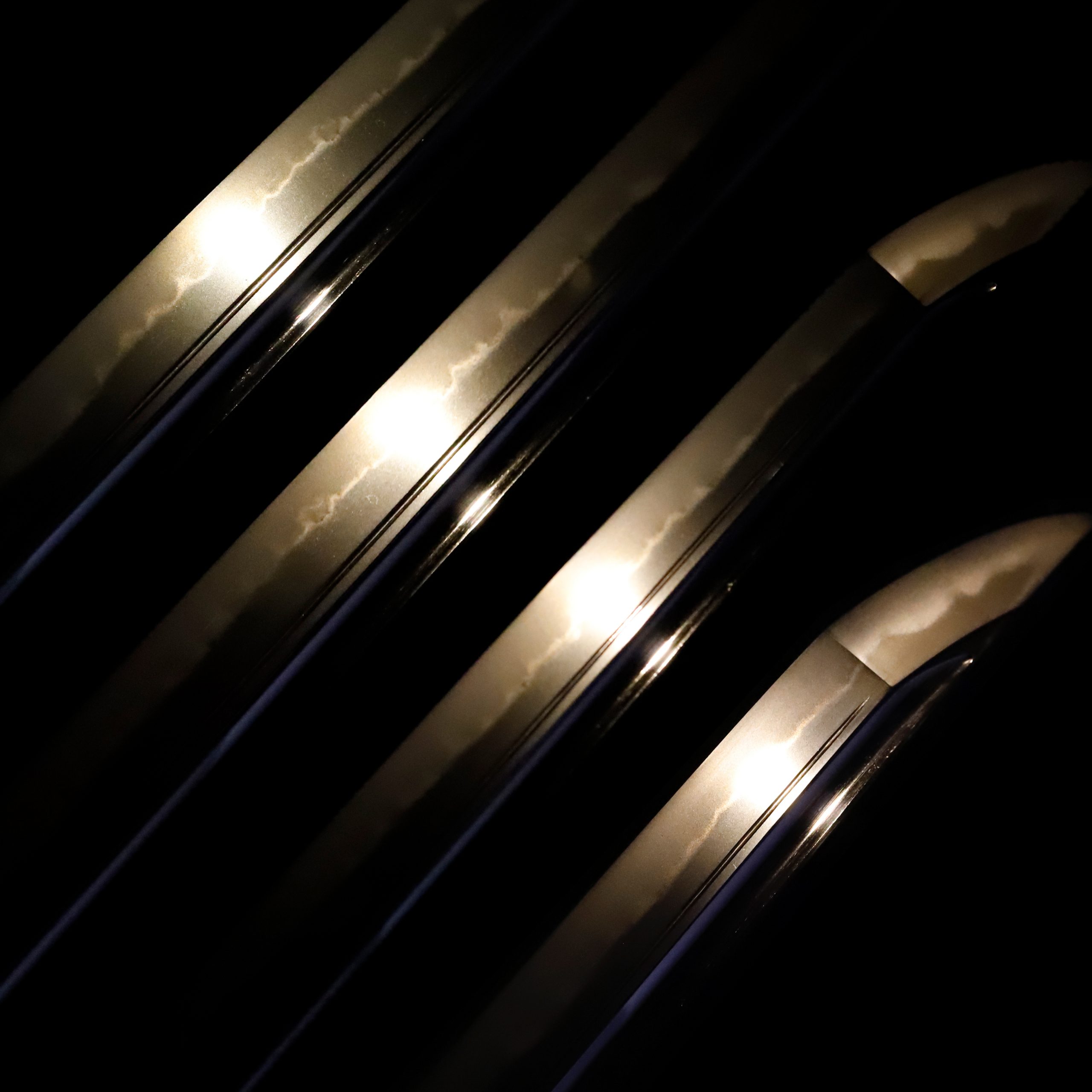
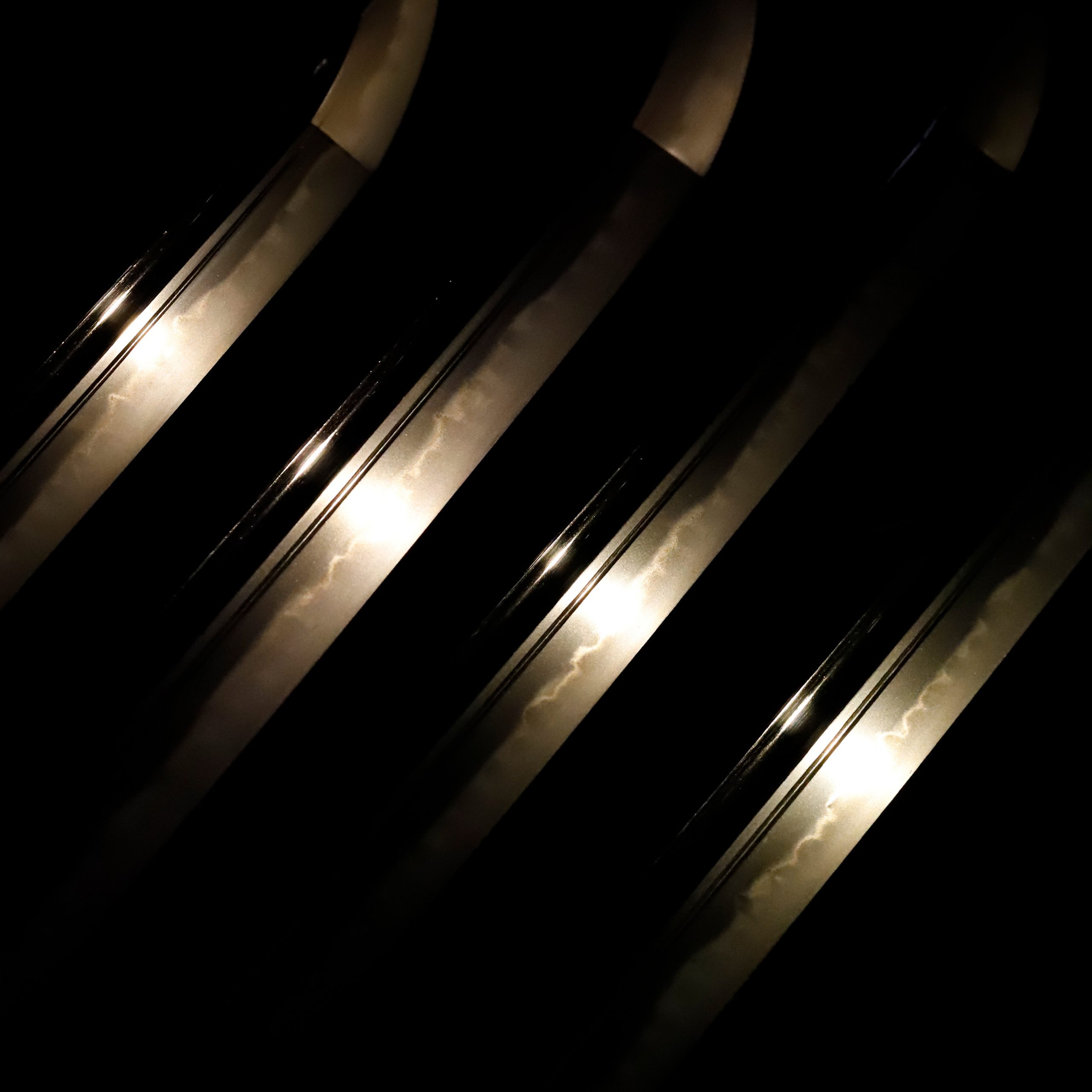
Nakago:Nakago is the tang of the Japanese sword.
Japanese swordsmiths left the black rust on the tang because it prevents red rust while the tang is in its handle. And the discoloration of the tang was created over time, and it is a great indicator for a Japanese sword specialist to estimate when the sword was forged.

Horimono: Horimono is an inscription or sculpture on Japanese swords.
The history of the Horimono (彫り物, blade sculpture) in Japan is old. It goes back about 1,300 years ago. Japanese swords initially had the Chokutou (直刀, straight blade) shape. And it changed its form to the Wantou (湾刀, curved blade) shape in the age when Samurais appeared. Samurais fought on the battlefields for their life. Japanese sword was the integral weapon that divided the life and death of the warrior. They expressed their wishes for divine protection by applying their religious objects to the Horimono. The Fudo Myo-O (不動明王, acalanātha), and the Kurikaraken (倶利伽羅剣) are those kinds of popular designs. About these motifs, please read the explanation of the Menuki part.
Originally, people enjoyed decorativeness of the Horimono as a symbol of authority. However, Samurais attached an importance to its practicality and religiousness. One theory says decorative elements have been strengthened again in the Horimono since the Edo period, which was peaceful time, and characters such as auspicious animal or plant designs and Japanese poems, Chinese poems were also carved. By inquiring into the history of the Horimono, you would notice that the demand of Japanese sword changed as the times changed.
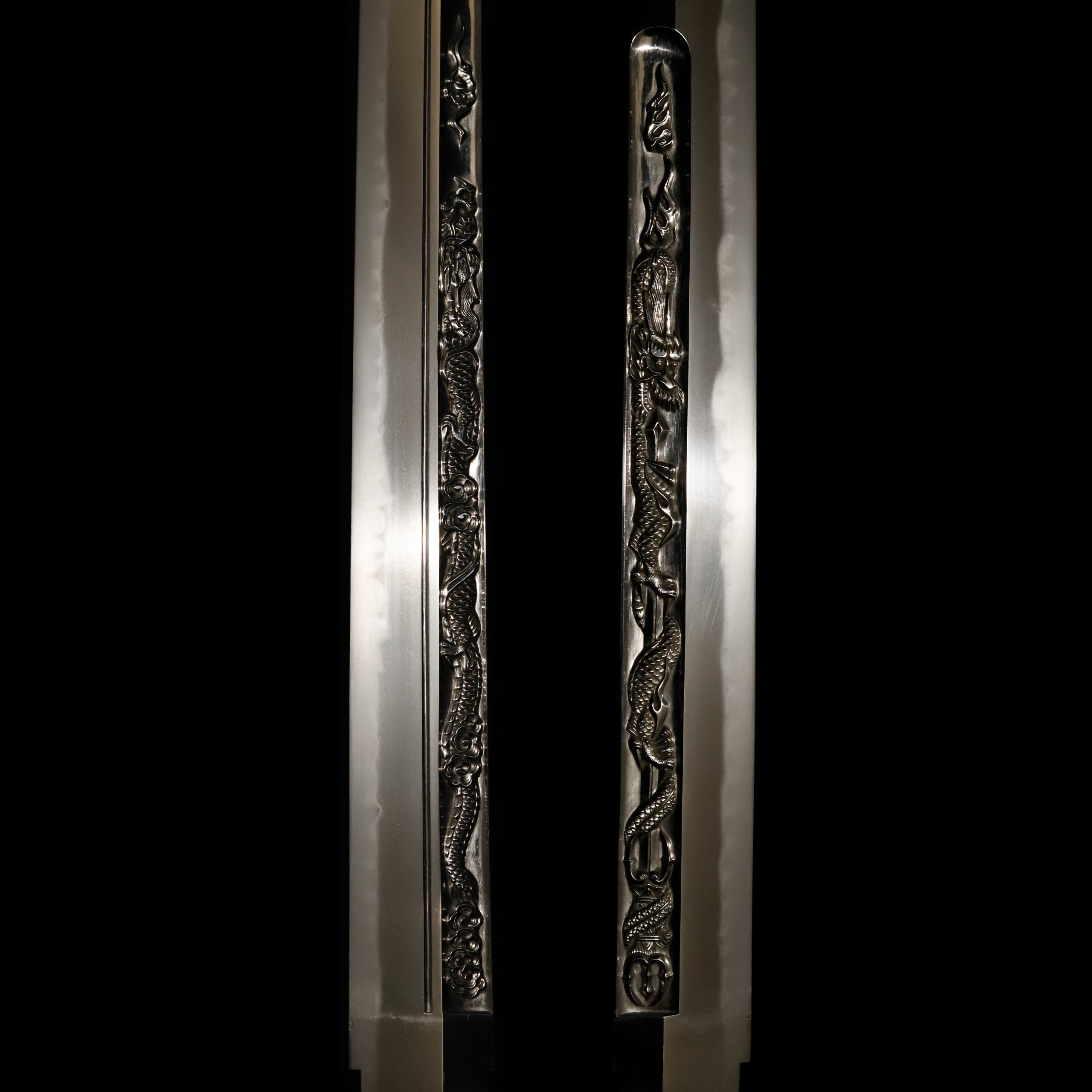
Koshirae: Koshirae is the mounting of the Japanese sword. There are several parts that consist of Koshirae such as Saya (Scabbard), Tsuka (Handle), Tsuba (Handguard).
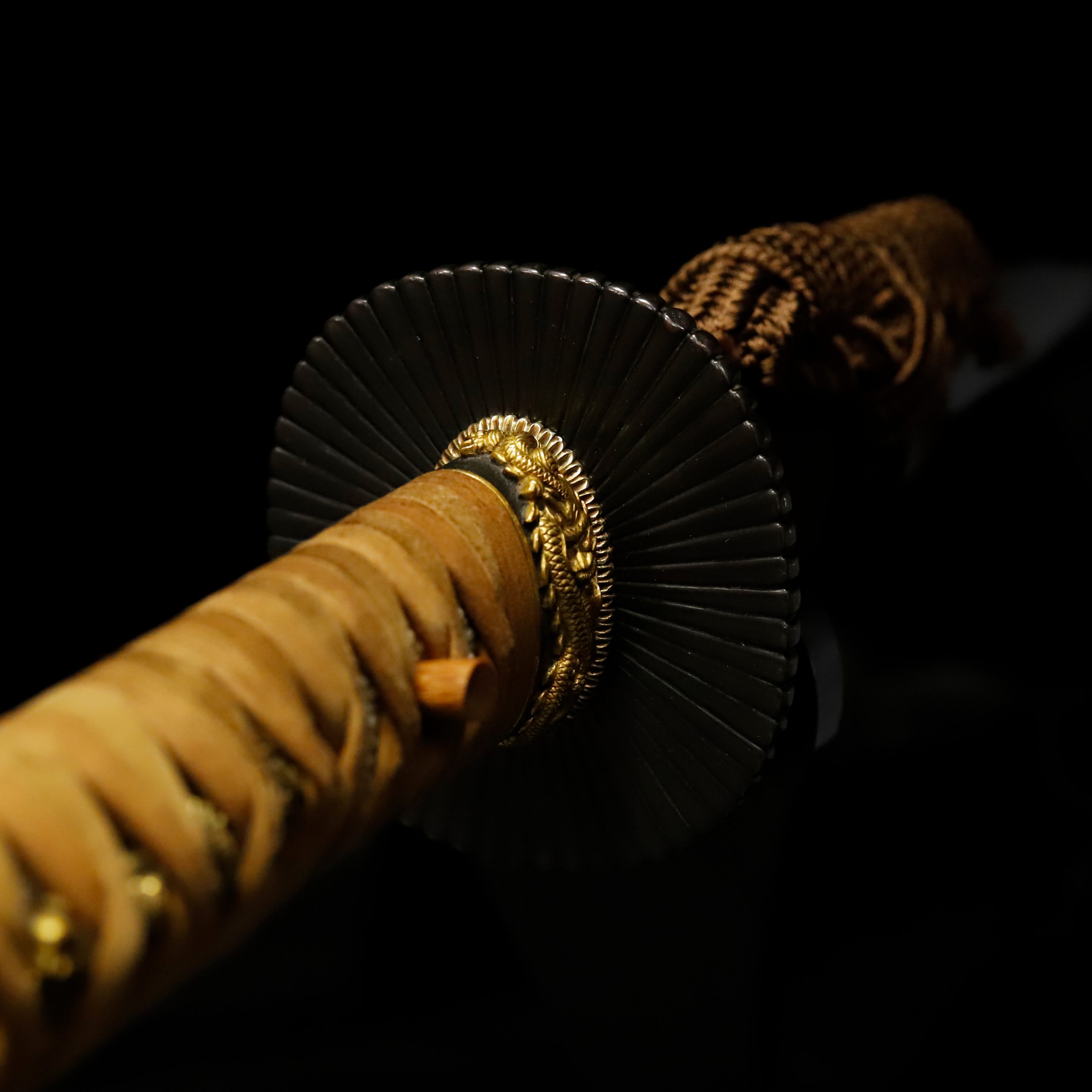
Fuchi-Kashira:A pair of matching sword fittings that cover the upper and bottom parts of its sword hilt.
Dragons are designed on this Fuchi Kashira. It shows the maker’s proficient sculpture technique. Dragons are engraved semi-three dimensionally; you would even feel as if they are flying from there and coming to you. The details, such as each scale, are elaborately expressed. The golden-colored dragons are standing on the black color ground; this combination makes a luxury color contrast.
Initially, the dragon is an imaginary creature found in ancient traditions or myths. Furthermore, it is regarded as a symbolic beast of auspicious signs. Its body is likened to nine animals: antlers are deer, the head is a camel, eyes are demons, the neck is a snake, belly is the Mizuchi (蛟, mythical animal in Japan which looks like a snake and have a horn and four legs), scales are fish, claws are falcons, palms are tigers, and ears are cows. It was thought that the dragon would reign at the top of all animals because of its odd-looking appearance.
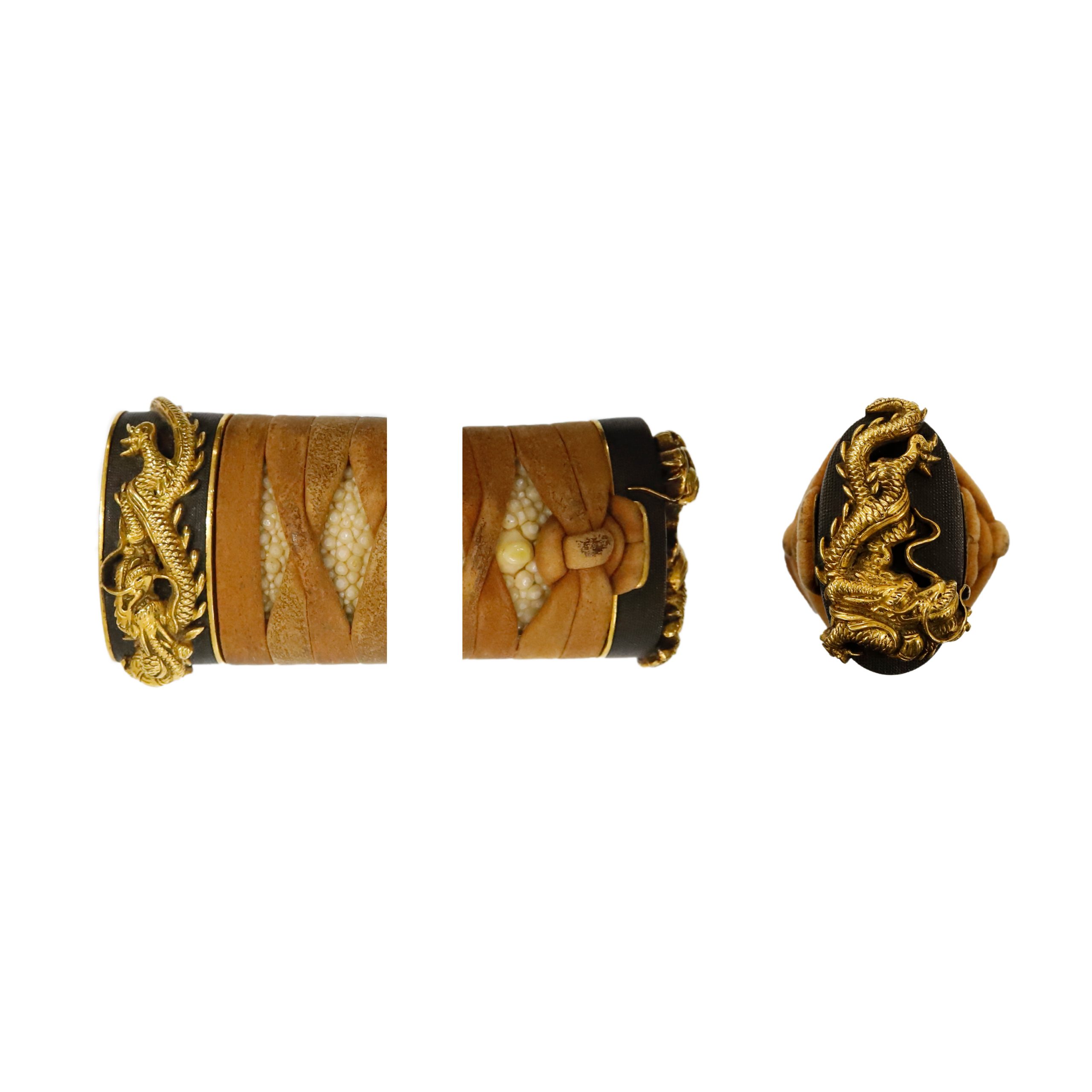
Tsuka and Menuki:Tsuka is the handle of the Japanese sword and Menuki is its decoration.
Same as the Fuchi Kashira, this Menuki’s motif is also the dragon, and golden metal is applied to it. Some gold has already fallen off due to aging. However, we would say it is relatively in good condition.
Seeing through the gaps of the Tsukamaki thread, the dragon coils its body around the sword. This design is called as the Kurikara Ken (倶利伽羅剣). It is said the Fudo Myo-O (不動明王, acalanātha) brings this sword. The Fudo Myo-O is a protective god in Buddhism, particularly Japanese Shingon Buddhism. This god was also known as a god of wars. According to a theory, this sword has the power to punish evils, crush worldly desires, and achieve the effects of religious training.
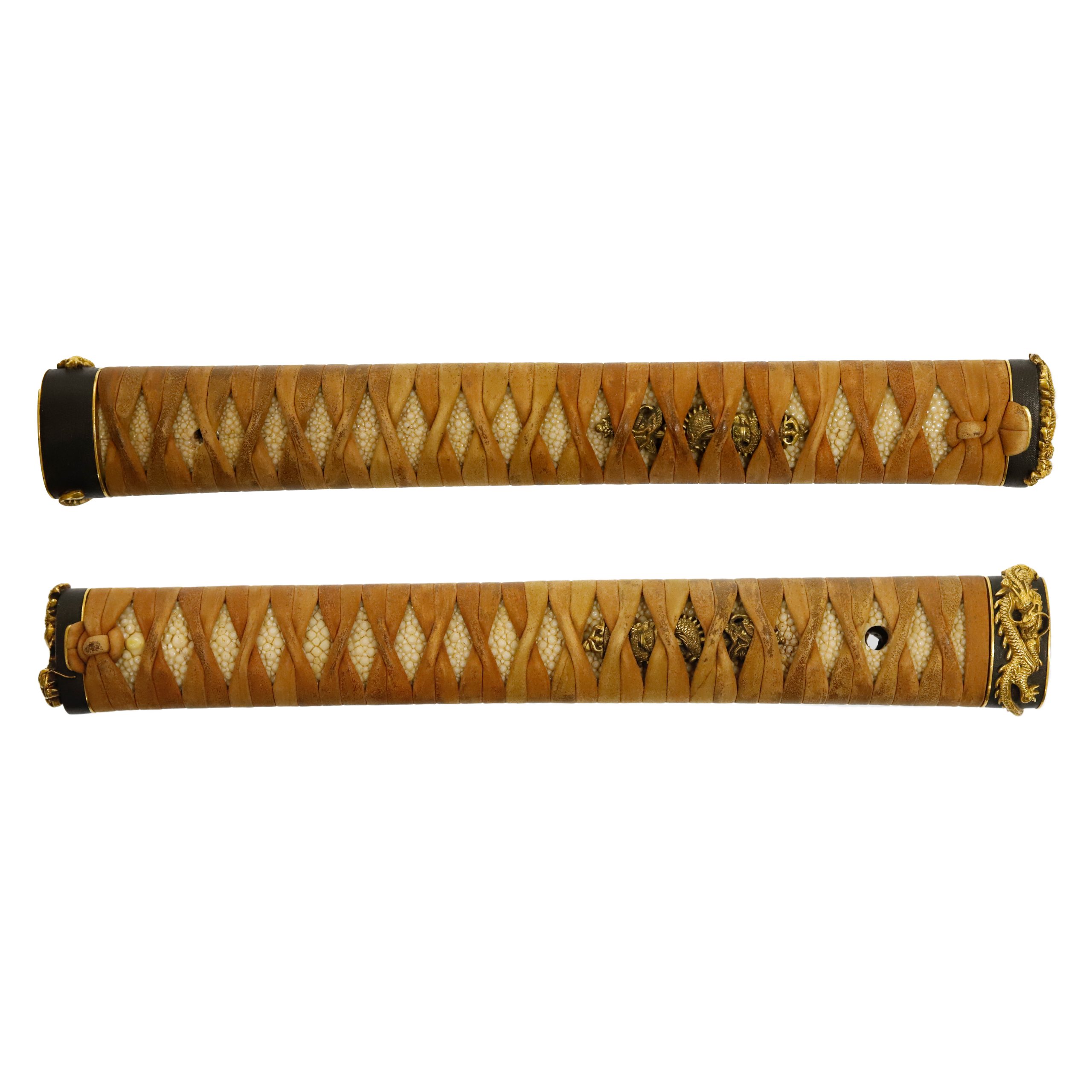

Tsuba and Habaki:Tsuba is the handguard for the Japanese Sword and Habaki is the equipment to make the blade not touch its scabbard inside. It prevents the blade from getting rusty and chipped.
This Tsuba’s shape might imitate a chrysanthemum flower. It seems petals are arranged radially and evenly. This flower symbolizes autumn, and its design has been appreciated by the Japanese since a long time ago, and people consider it an elegant motif. The chrysanthemum was once used as a medicine for obtaining a long life. And it was brought to Japan from the Continent with this thought during the Nara period (648-781). As its petals form radially, the chrysanthemum has been likened to the sun. That is why this flower pattern is treated as the symbol of perpetual youth and longevity or good health.
Although there are no ornamental decorations with gold or silver, it is a gorgeous work due to the glossy blackish color of the Tsuba itself and the symmetrically shaped design. The entire appearance of the Koshirae is beautifully in harmony when this Tsuba is put into the handle.
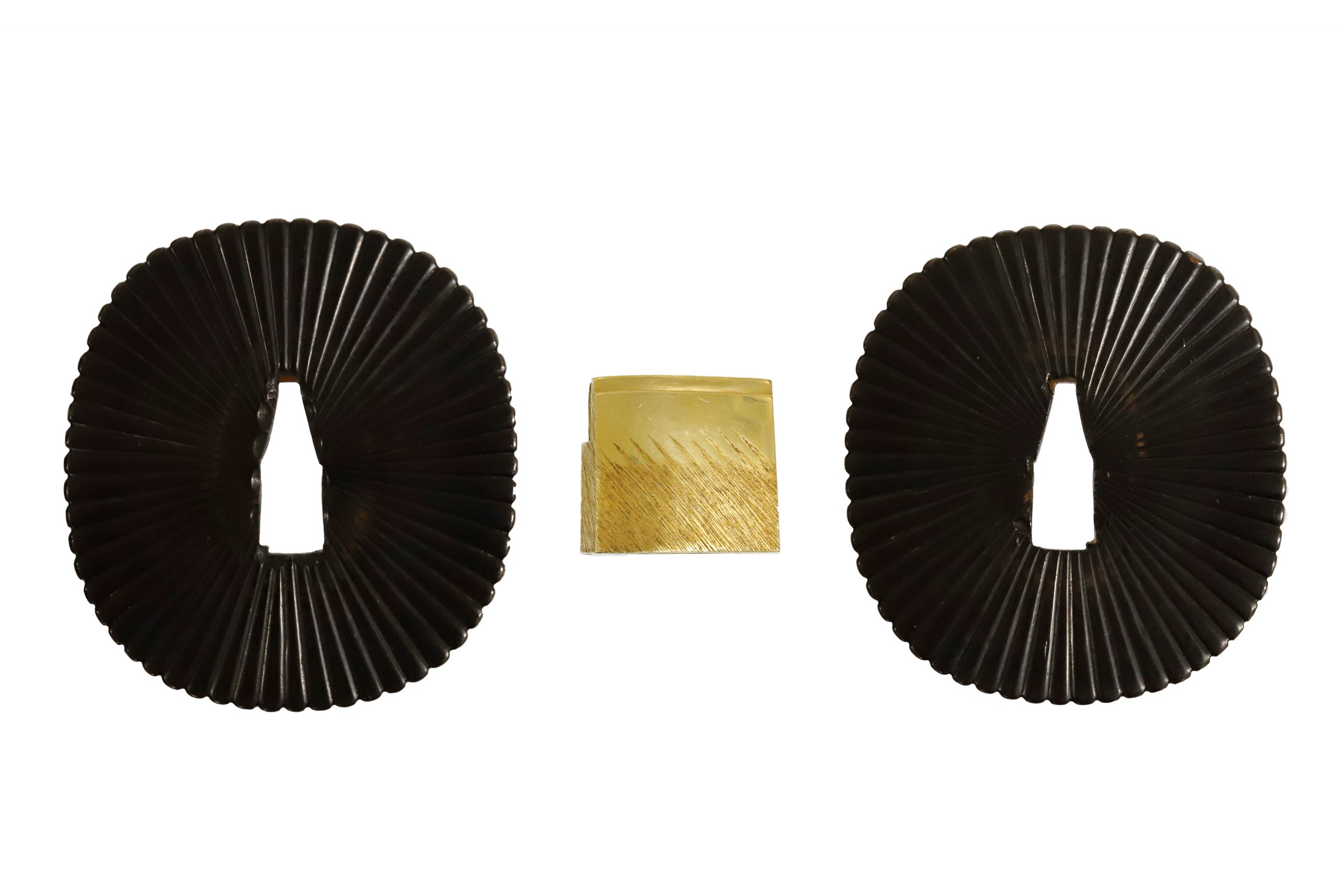
Saya: Saya is the scabbard for the Japanese sword.
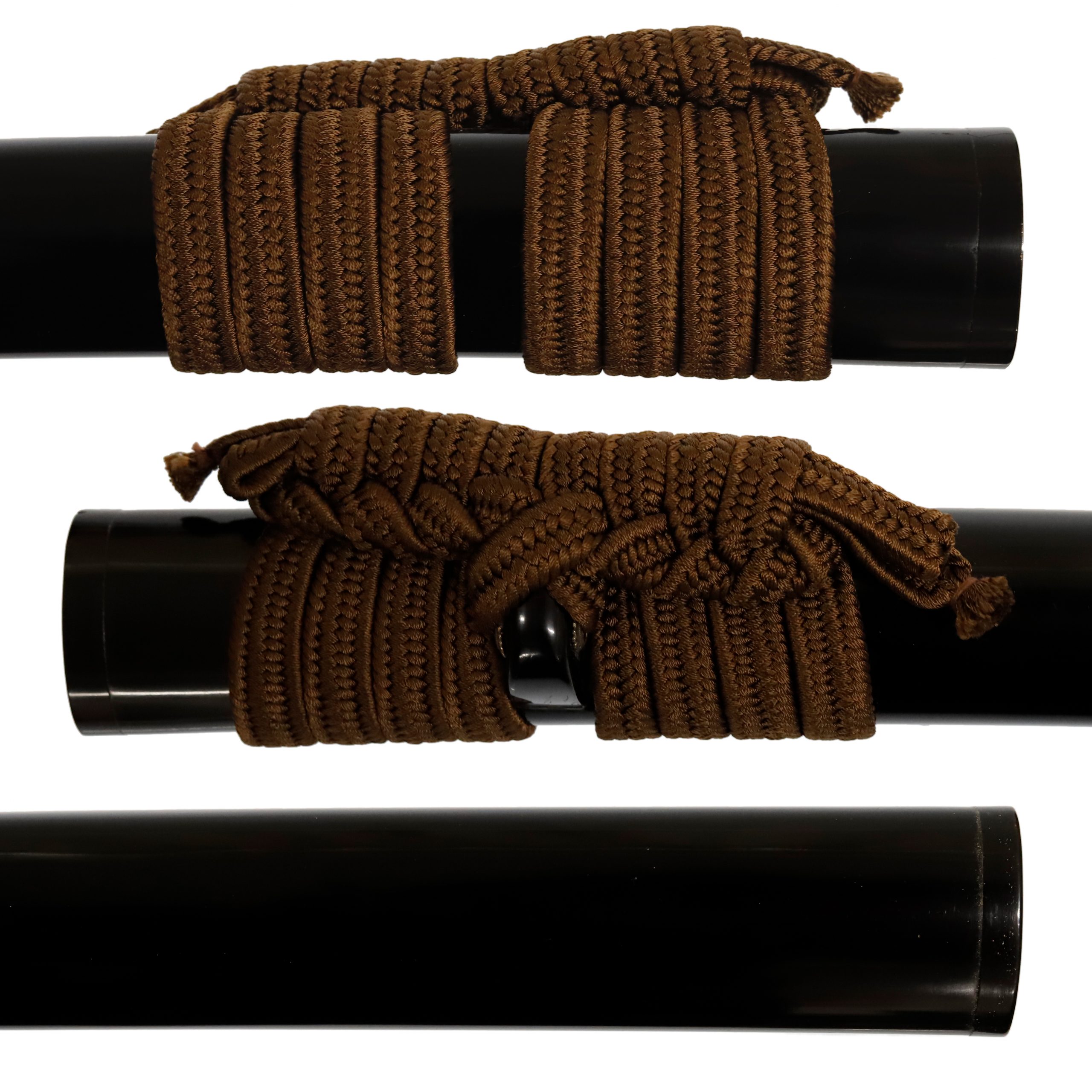
Authentication Paper:NBTHK Tokubetsu Hozon Certificate
NBTHK, also known as Nihon Bijutsu Touken Hozon Kyokai (the Society for the Preservation of the Japan Art Sword), is one of the oldest Japanese sword appraising organizations in modern-day Japan. They authenticated the blade on Feb 19th in the second year of Reiwa (2020). They appraised it as a Tokubetsu Hozon Touken, the blade especially worth preserving for Japanese society. The purchaser will receive this original certificate as well. We can also translate what is written into English and make a PDF file for your record if you request.
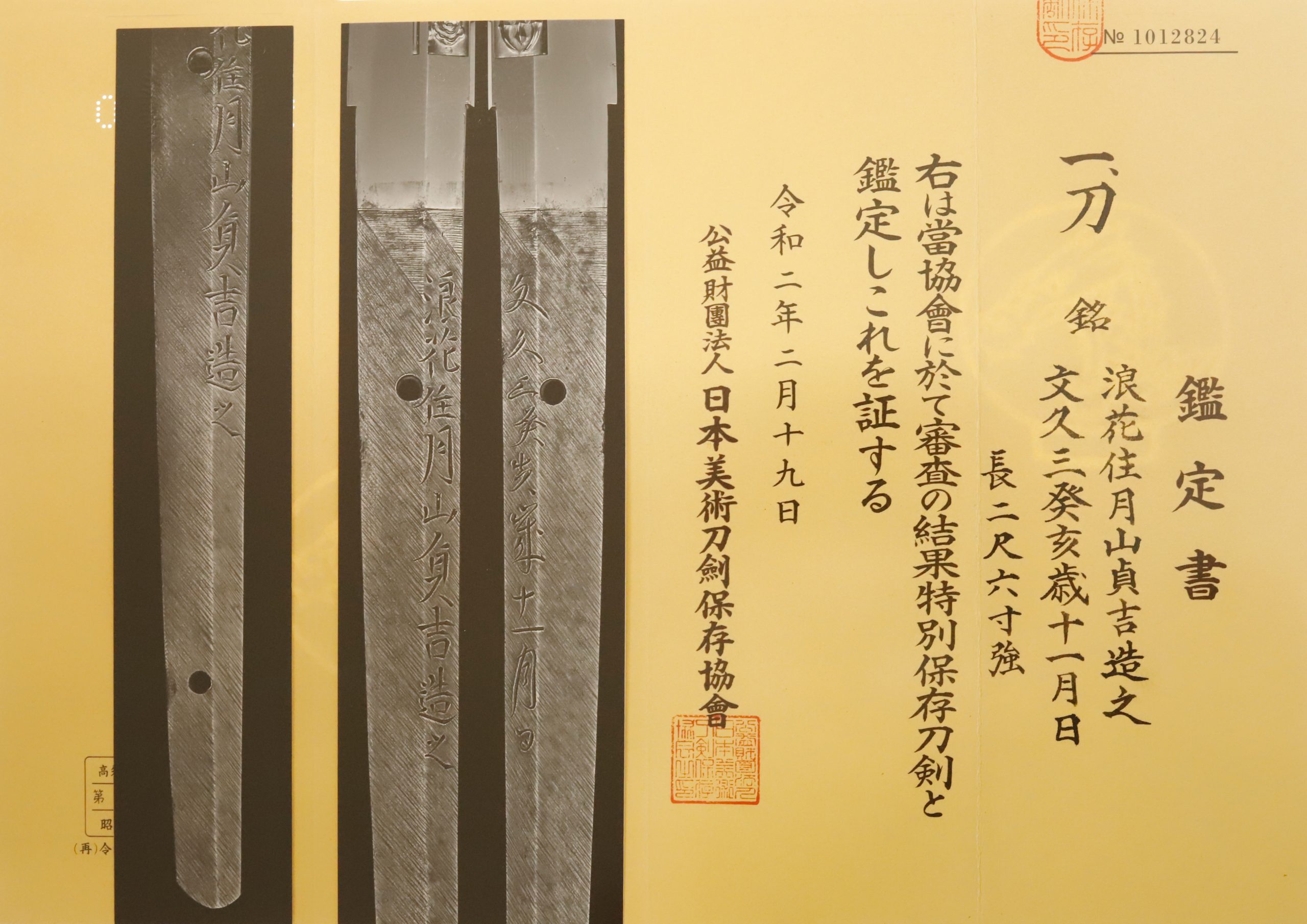
Registration Number : Kochi 5146
The Board of Education in Kochi prefecture issued a registration paper for this sword . It is called Jyu Token Rui Torokusho(銃刀剣類登録証). Bunkacho(The Agency for Cultural Affairs) acknowledges a Japanese sword with this paper as a work of art.
The sword needs to be traditionally hand-forged and made of Tamahagane carbon steel to be registered in the system. With this paper, its owner in Japan can legally own an authentic Japanese sword. Based on this registration number, we will apply for its export permit.
This paper will need to be returned to the board of education when the sword is being shipped abroad, but you can receive a copy of it. An English translation of this registration paper is available on request.
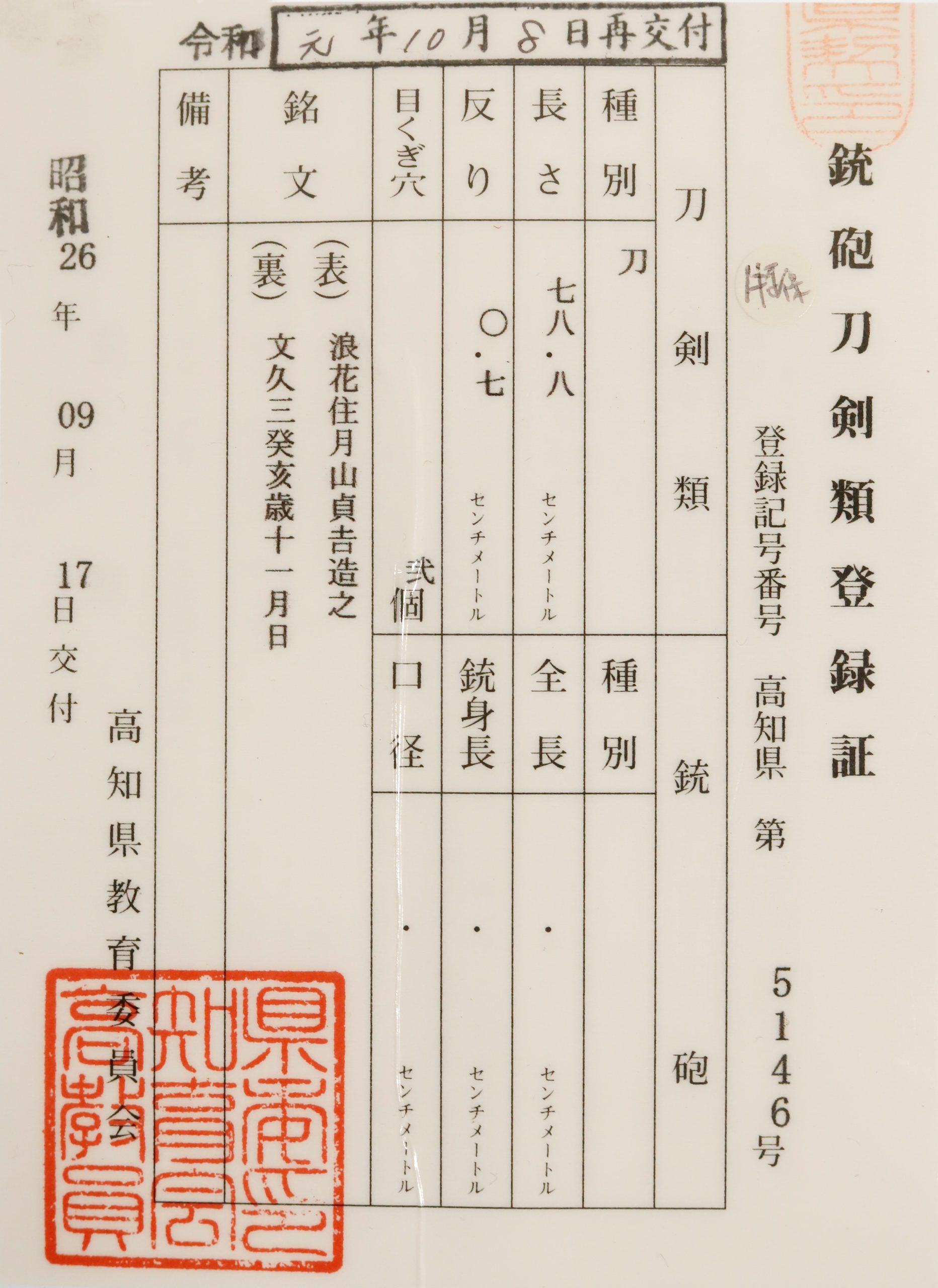
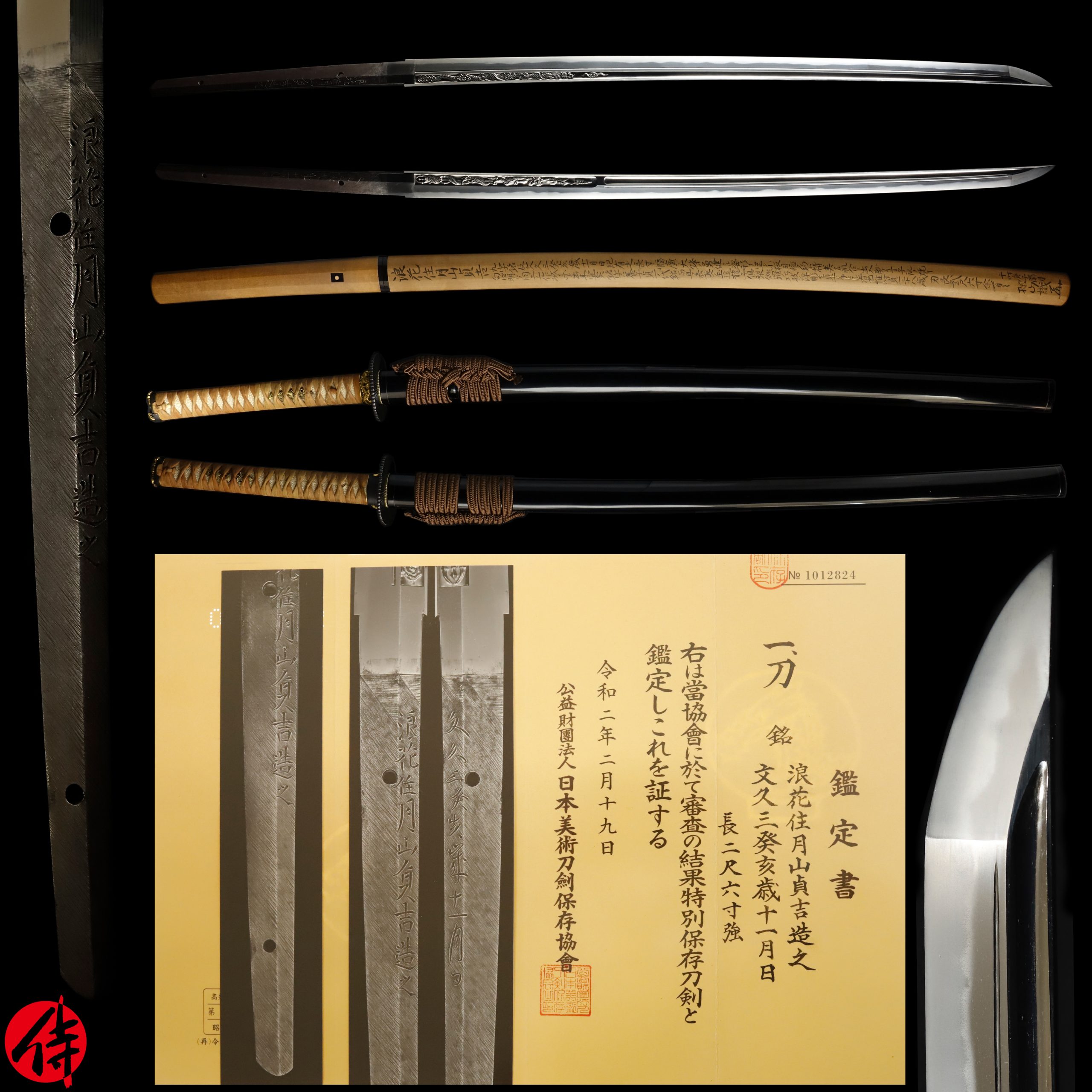
—————————————————————–
【About us】
Samurai Museum is located in Tokyo, Japan, exhibiting antique artifacts related to the Samurai history. Samurai Museum Shop is the place for those who are interested in Japanese culture and craftsmanship. We deal with antique Samurai swords/armor, traditional crafts made in Japan and so on.
【Japanese Sword& Export Process】
The Japanese swords we deal with are hand-forged edged swords made in Japan. It was made from the traditional carbon steel called TAMAHAGANE(玉鋼). Samurai Museum is familiar with the proper legal procedure for an antique/ authentic Japanese sword to be exported from Japan. We have sent more than 350 Japanese swords to amazing owners who appreciate its historical value.
Each Japanese sword is registered under the Agency for Cultural Affairs and the Board of Education in Japan.They issue a registration paper for each Japanese sword for its owner in Japan to legally possess it. The Japanese sword with its registration paper means it was traditionally hand-forged in Japan.
To legally export the sword from Japan to other countries, we will have to apply for its permit to the Agency for Cultural Affairs(Bunkacho) and return the original registration paper to the Board of Education. It normally takes around 2-4 weeks to receive this permit after submitting required documents. And we would like you to expect at least 1-1.5 months for your order to arrive at your given address after you ordered. For more detailed info, please click here.
It is allowed for residents in Japan to own authentic Japanese swords without a special license as long as they come with registration papers. Please feel free to contact us if you are a resident of Japan, whether temporarily or permanently. We will also assist you when you leave Japan and need to obtain the export permit.
【Payment Method】
We accept payment through Stripe (Credit card), PayPal, Apple Pay or ChromePay, all of which are secure payment methods. Also, you don’t need to make an account on Stripe for the checkout. If you prefer other payment method, please contact us. After confirming your payment, we will apply for an export permit. You may either pay in JPY, USD, AUD, CAD,EUR or GBP. The price is set in Japanese Yen. Prices in other currencies are automatically calculated based on the latest exchange rate.

【Shipping】
We have shipped authentic Japanese swords to the USA, Canada, Mexico, UK, Germany , France, Switzerland Hong Kong and Australia. If you don’t live in these countries and like to order, please contact us first before making a purchase. We offer Free International Shipping as long as we can send antique Japanese swords by either EMS or FedEx(Canada).
We normally ship by EMS(Express Mail Service) provided by Japan Post. When we receive an order from the Canada we will use FedEx instead as EMS temporarily stops shipping from Japan to those countries due to COVID-19.
We will send you a tracking number for your order as soon as we hand it to the post office/FedEx. We will put 100 % insurance on the shipping document without any extra charge. Based on the total amount, there might be a duty tax or other fee for you to pay, depending on the countries. We use package cushioning to protect the item and put it in a PVC pipe, which is one of the most secure packages because of its durability.
It will normally takes 5-14 days for the item to arrive at your given address after we dispatch it. Time of delivery is estimated as accurately as possible by the carrier but does not take into account any delays beyond our control such as by inclement weather, post office holiday seasons.
* If you live in Australia and like to purchase an authentic Japanese sword, please click here to know the detail.
*Please keep in mind that due to the spread of COVID-19, there might be delays in shipping. If you like to know the detail about shipping, please feel free to ask us.

【How to make sure the condition】
Please keep in mind that what you are going to purchase is an antique item. We uploaded high resolution photos for you to check its condition thoroughly. If you like to see more photos with different angles, please feel free to contact us. We will be happy to send them to you so that you can make informed decision. It is essential for us to know that you are happy with your choice of a sword. and we are prepared to use the best of our ability to serve you.
【How To Contact Us】
Please contact us through email, Facebook Messenger or Live Chat if you have any questions. You can find each icon on the right side of the website. Please click one of them to reach us. We will reply to you within 1-2 business days.
【The Art of Nihonto(Japanese Sword)】
Samurai’s history is a profound, eloquent legacy of ancient Japanese warriors in which millions of people worldwide are being fascinated. If you like to find out the art of Nihonto, please click here.
【A Guide to Japanese Sword Maintenance】
After acquiring an genuine Japanese sword, it is also important to know how to take good care of it. Here is the special video for you. Mr. Paul Martin, Japanese sword expert, shows you how to give proper maintenance to your sword. By mastering how to clean the Japanese sword, its aesthetic beauty will last forever.
When you purchase a Japanese sword from us, you can get a Free Japanese sword maintenance kit. It comes with four tools(Choji Oil, Uchiko Powder, Peg remover, Oil Applicator). By watching the video instruction above , you can enjoy learning how to maintain your Japanese sword while appreciating it.


MORE ANTIQUE JAPANESE SWORD FOR SALE
LEARN JAPANESE SWORD TERMINOLOGY
Thank you for reading all the information on the page. If you have any difficulty choosing the right Japanese sword for you, we will be more than happy to help you find the one that speaks to you the most. Please feel free to contact us.
